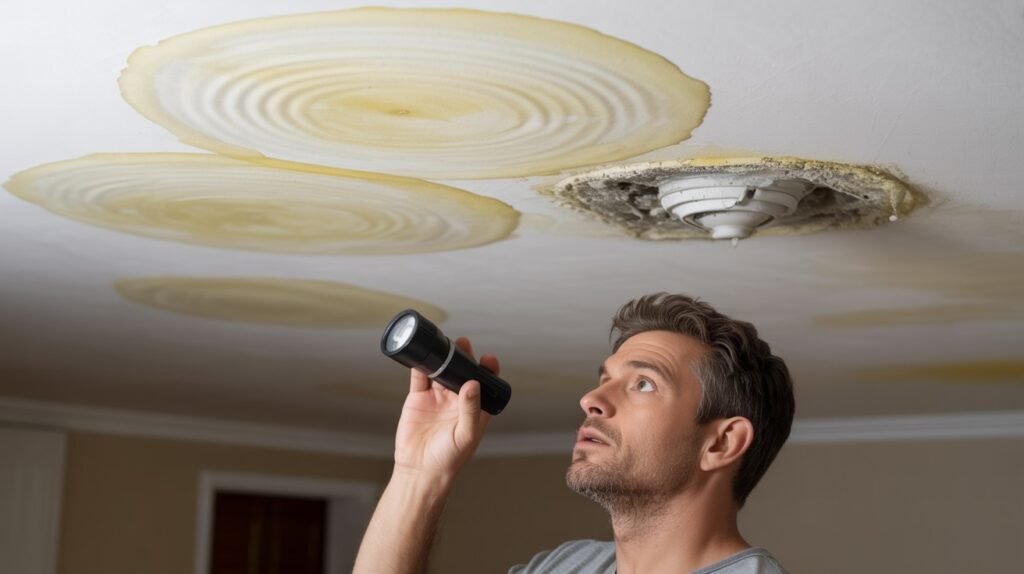I remember spotting yellow stains on my ceiling and thinking, “Where did that come from?” It turned out to be more than just an eyesore it was a sign of a deeper issue.
From hidden leaks to poor ventilation, these spots are often your home’s way of saying something’s wrong. I’ve been through the stress of figuring it out, and I know how overwhelming it can feel. But don’t worry. You’re not alone, and it’s fixable.
In this guide, I’ll share what I’ve learned through personal experience and expert advice, so you can pinpoint the cause and take the right steps. Let’s get your ceiling (and peace of mind) back in shape.
What Are Yellow Spots on a Ceiling?
Yellow spots on ceiling surfaces come in various shapes and intensities.
You might notice faint, barely-there discoloration that seems to appear gradually, or bold, dark yellow patches that seem to show up overnight.
These stains often present as circular rings, similar to coffee stains on paper, though they can also form irregular, sprawling patches that follow no particular pattern.
The appearance can tell you a lot about what’s happening behind the scenes. Fresh water damage typically creates lighter, more defined rings, while older moisture issues tend to produce darker, more widespread discoloration.
Sometimes you’ll see multiple overlapping circles, indicating repeated exposure to moisture over time.
Here’s the important part: these spots are rarely just surface-level problems. Think of them as your ceiling’s way of sending an SOS signal.
What you’re seeing is often the visible tip of a much larger issue hiding above, whether that’s a slow roof leak, faulty plumbing, or moisture buildup that’s creating the perfect conditions for mold growth.
Ignoring these warning signs can lead to serious consequences.
What starts as a small cosmetic issue can quickly escalate into structural damage, costly repairs, or even health hazards if mold becomes involved.
Common Causes of Yellow Ceiling Spots
1. Water Damage (Most Common Cause)
Leaky roof: Missing shingles, damaged flashing, or clogged gutters allow water to seep through, creating those telltale yellow rings directly below the problem area. Storm damage often reveals itself through ceiling stains days or weeks after the weather event.
Leaky plumbing: Pipes running above your ceiling can develop slow drips or joint failures, especially common in bathrooms where constant moisture weakens connections over time. Even a tiny leak can create significant staining if left unaddressed.
Condensation buildup: Poor attic ventilation traps humid air, causing moisture to condense on the ceiling materials from above. This is particularly problematic in humid climates or homes with inadequate insulation.
2. Mold and Mildew Growth
Moisture accumulation spots: When water sits in ceiling materials for extended periods, mold spores begin to colonize, creating yellow or brownish discoloration. These spots often start small but gradually spread as the mold feeds on organic materials in drywall or wood.
Musty odors and darkening: Mold-related stains frequently come with a distinctive musty smell and may darken over time as the colony grows. You might also notice the spots becoming fuzzy or textured as mold becomes more established.
3. Nicotine or Smoke Residue
Indoor smoking residue: Years of cigarette smoke create a sticky film that attracts dust and gradually yellows ceiling surfaces, particularly in areas with poor air circulation. This type of staining is usually uniform rather than spotty.
Fireplace and kitchen smoke: Inadequate ventilation from fireplaces or cooking can deposit smoke particles on ceilings, creating yellowish patches near these sources. Poor exhaust fan performance often contributes to this buildup.
4. Cooking Fumes or Grease
Kitchen ceiling accumulation: Steam, grease particles, and cooking vapors rise and stick to ceiling surfaces, creating greasy yellow spots that attract dirt over time. This is especially noticeable directly above stovetops and ranges.
Ventilation system issues: When range hoods don’t function properly or are undersized for the cooking area, grease-laden air spreads across the entire kitchen ceiling. These stains often feel slightly sticky to the touch.
5. HVAC or Ventilation Issues
Improper insulation problems: Gaps in insulation allow warm, humid air to contact cold surfaces, creating condensation that leads to water stains and potential mold growth. This commonly occurs around ductwork and recessed lighting.
Duct leaks and condensation: Damaged or poorly sealed ductwork can leak conditioned air into ceiling spaces, creating temperature differentials that cause moisture problems. These issues often manifest as spots near air vents or along duct runs.
Step-by-Step Process of Identifying the Root Cause?
Check the location of the stain
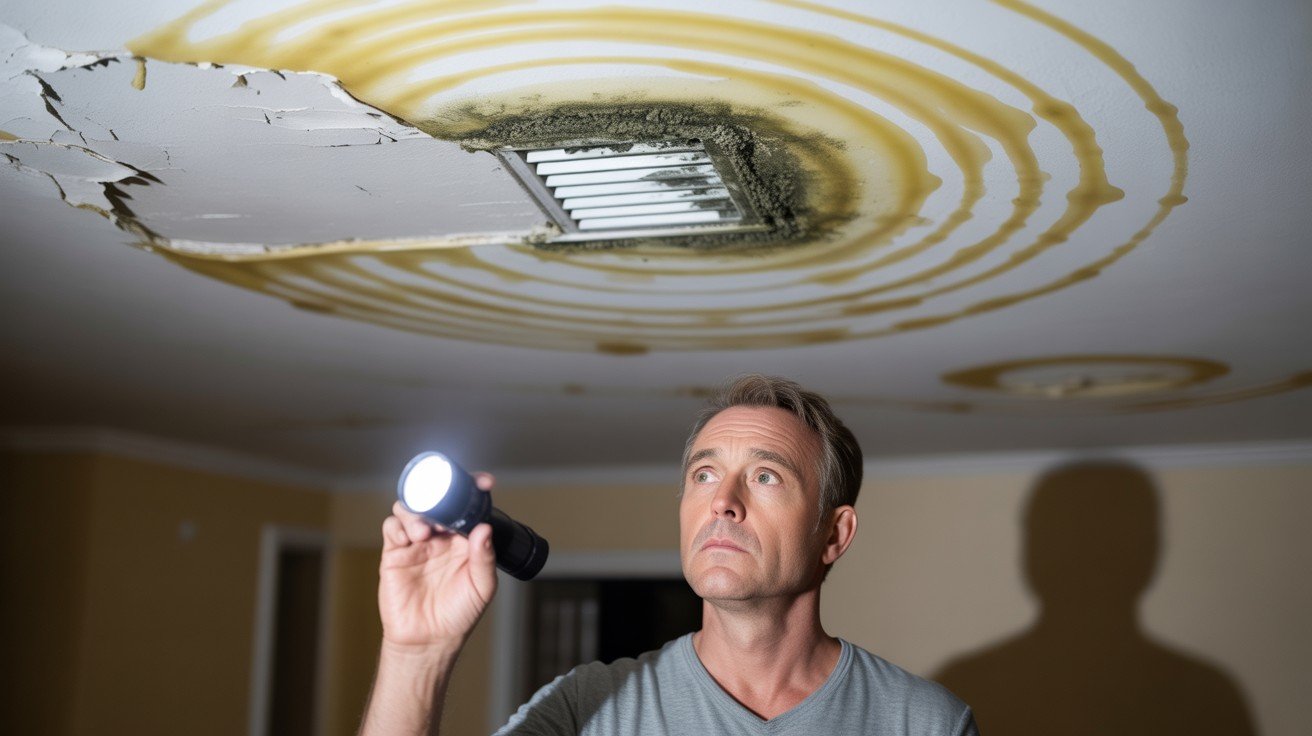
The position of yellow spots provides crucial clues stains directly below bathrooms usually indicate plumbing leaks, while spots near exterior walls or rooflines suggest roof problems.
Stains around HVAC vents or recessed lights often point to condensation or ductwork issues.
Look for recent leaks or weather events
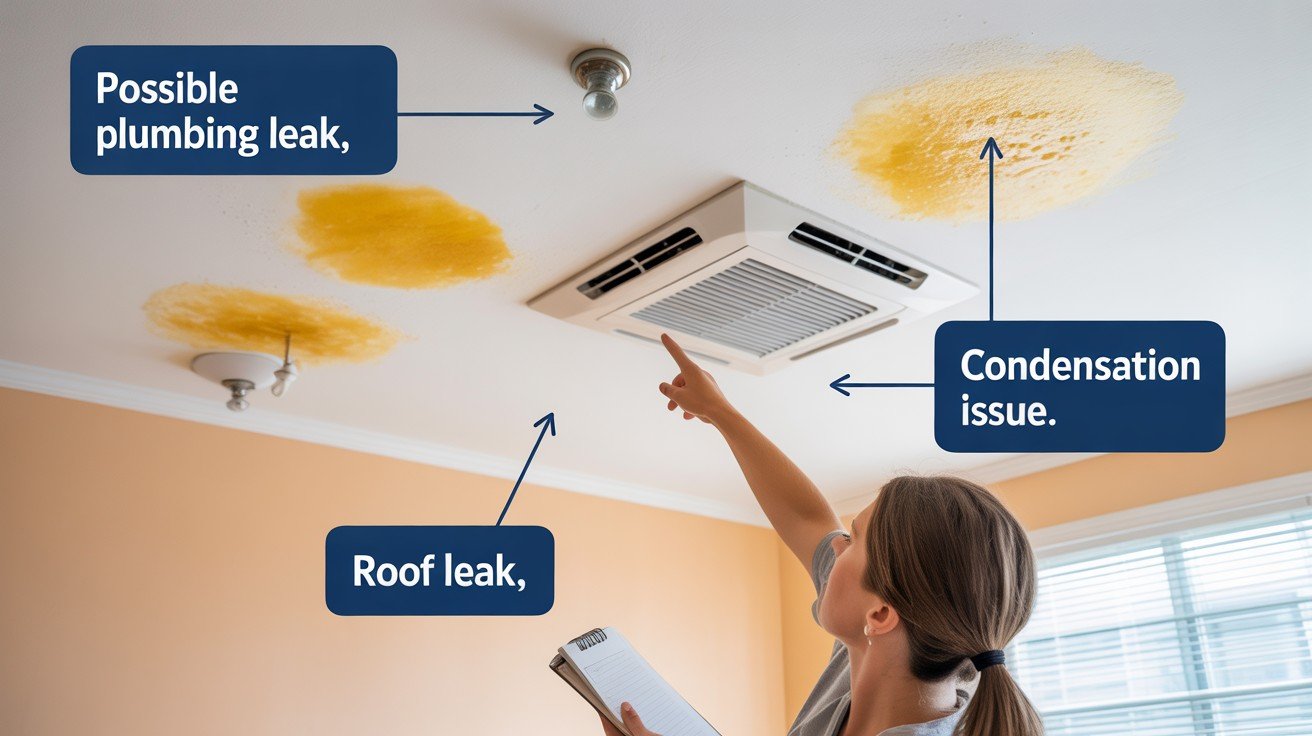
Think back to any recent storms, heavy rainfall, or plumbing work that might have triggered the problem.
Fresh stains that appeared after specific events are easier to trace than gradual discoloration that developed over months.
Use a moisture meter or inspect the attic
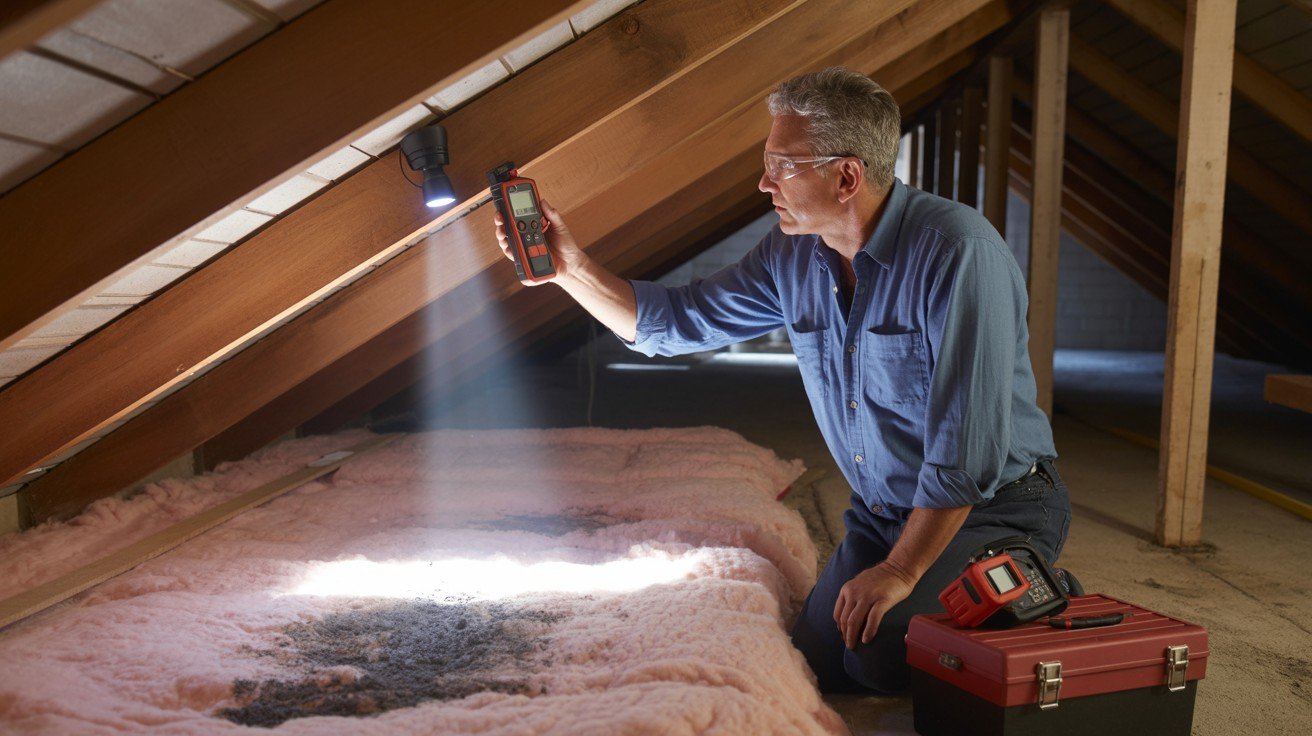
A moisture meter can detect hidden dampness in ceiling materials, while attic inspection reveals active leaks, insulation problems, or condensation issues.
Look for wet insulation, water stains on rafters, or signs of recent water intrusion above the affected area.
Observe for additional signs
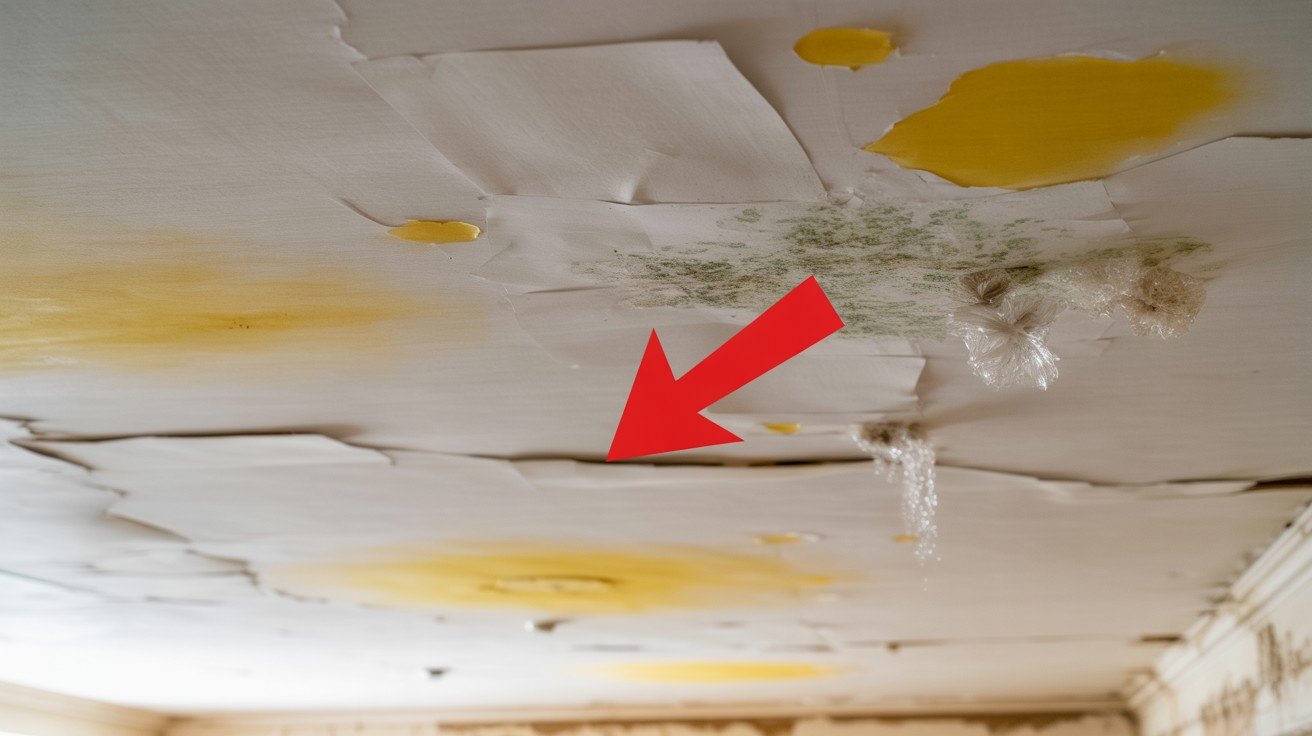
Check for peeling paint, soft or sagging drywall, and musty odors that accompany moisture problems.
These secondary symptoms help confirm the severity and help distinguish between active leaks and old, resolved issues.
Is It Dangerous?
Yellow spots can range from minor cosmetic issues to serious health hazards.
Simple stains from cooking or old smoke residue are typically harmless, but spots caused by ongoing moisture create perfect conditions for mold growth and structural damage.
Red flags requiring immediate professional help include: musty odors, soft or sagging ceiling materials, dark or fuzzy growth around stains, and spots that continue spreading despite surface cleaning.
How to Prevent Yellow Ceiling Spots in the Future?
Routine roof and plumbing inspections

Schedule annual roof checks to catch loose shingles, damaged flashing, or gutter problems before they cause interior damage.
Have a plumber inspect pipes in ceiling spaces every few years, especially joints and connections above bathrooms where leaks commonly develop.
Proper attic ventilation and insulation
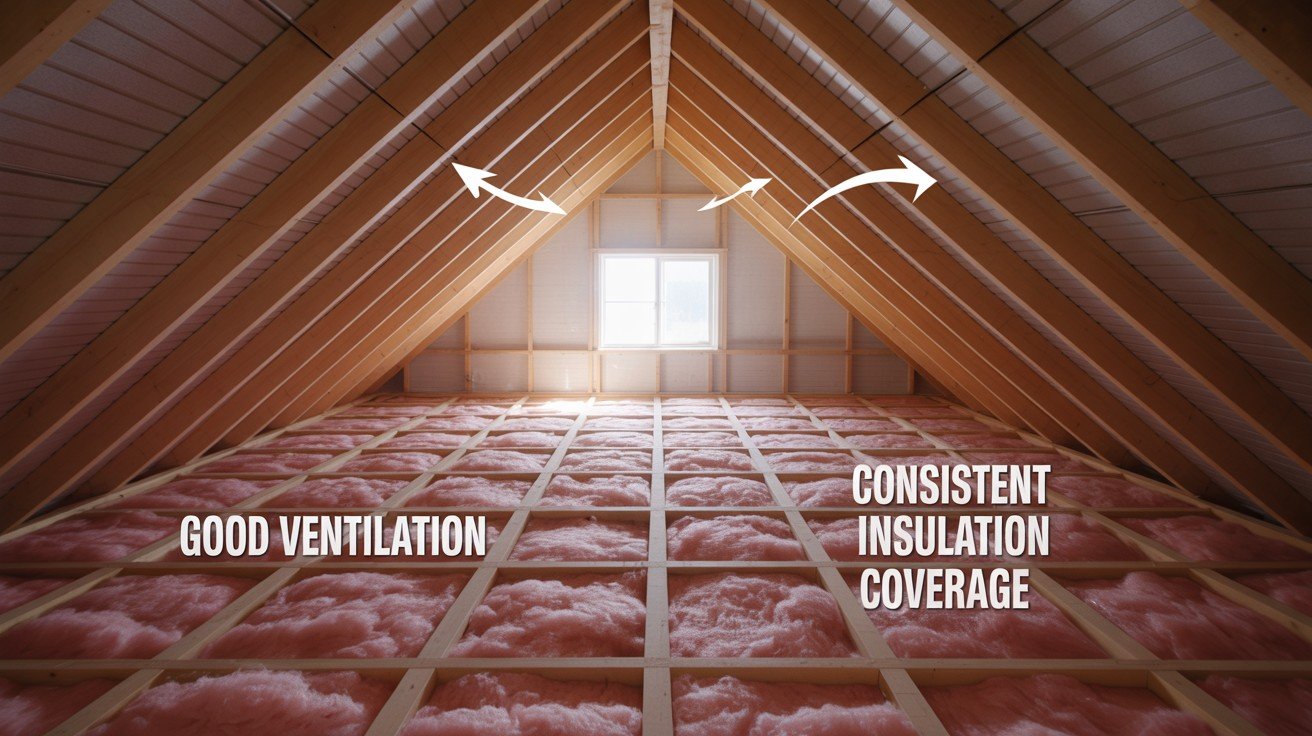
Ensure adequate airflow with soffit and ridge vents to prevent moisture buildup, and maintain consistent insulation coverage to avoid condensation.
Poor ventilation traps humid air that condenses on ceiling surfaces, while gaps in insulation create temperature differentials that cause moisture problems.
Installing exhaust fans in bathrooms and kitchens
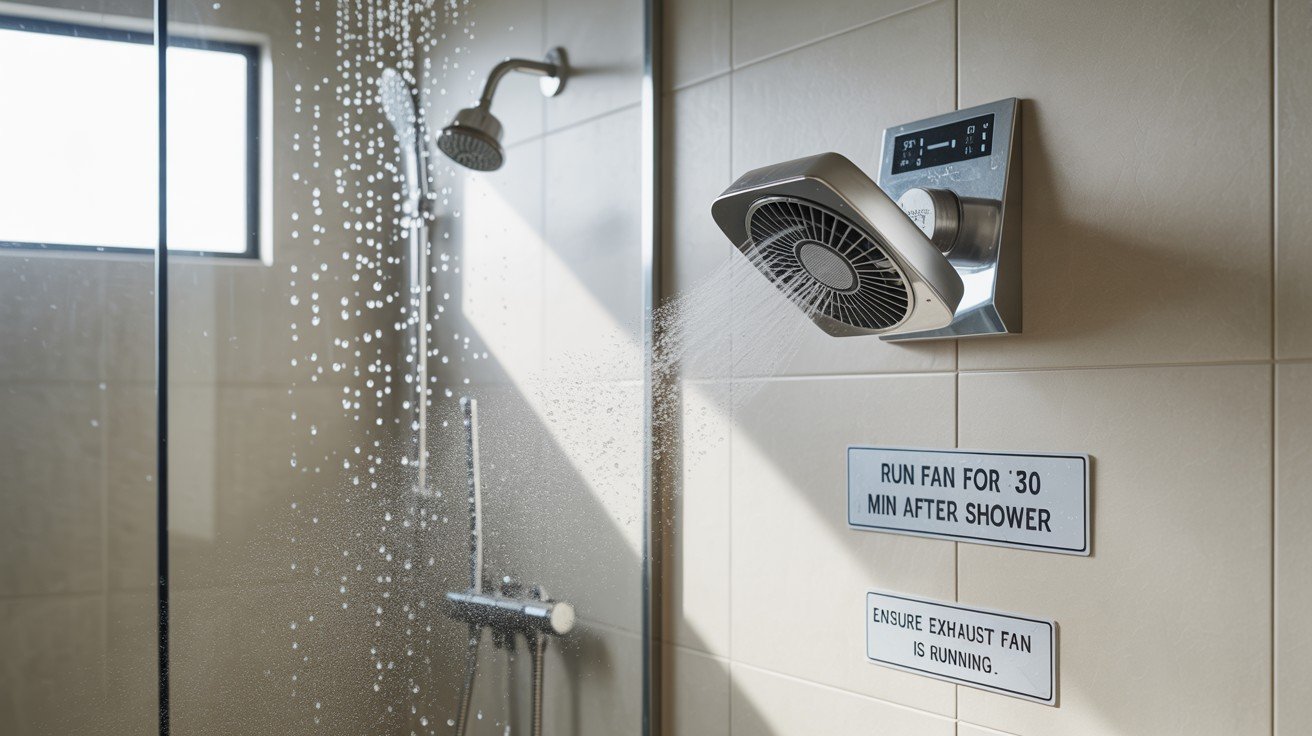
Use properly-sized exhaust fans to remove steam and cooking vapors before they settle on ceiling surfaces.
Run bathroom fans during and 30 minutes after showers, and ensure kitchen range hoods vent outside rather than recirculating air back into the room.
Conclusion
Yellow spots on ceiling surfaces are more than just unsightly blemishes they’re important warning signs that shouldn’t be ignored.
By understanding the common causes, from water damage and mold growth to cooking residue and ventilation problems, you can take swift action to address both the symptoms and underlying issues.
Remember, successful treatment always starts with identifying and fixing the root cause.
Surface cleaning without addressing moisture sources or ventilation problems will only lead to recurring stains and potentially bigger problems down the road.
The good news is that most ceiling spot issues are preventable with regular maintenance and proper home care.
Simple steps like routine inspections, adequate ventilation, and prompt leak repairs can save you from costly damage and health concerns.
When in doubt, don’t hesitate to consult professionals early intervention is always more affordable than major remediation projects.
Frequently Asked Questions
Can I just paint over yellow ceiling spots?
Painting without addressing the underlying cause will result in stains bleeding through the new paint within weeks or months.
Are yellow spots always caused by water damage?
No, they can result from smoke residue, cooking fumes, mold growth, or HVAC condensation issues, as well as water leaks.
How quickly should I address yellow ceiling spots?
Address them immediately if accompanied by musty odors or soft ceiling materials otherwise, within a few weeks of appearance.

